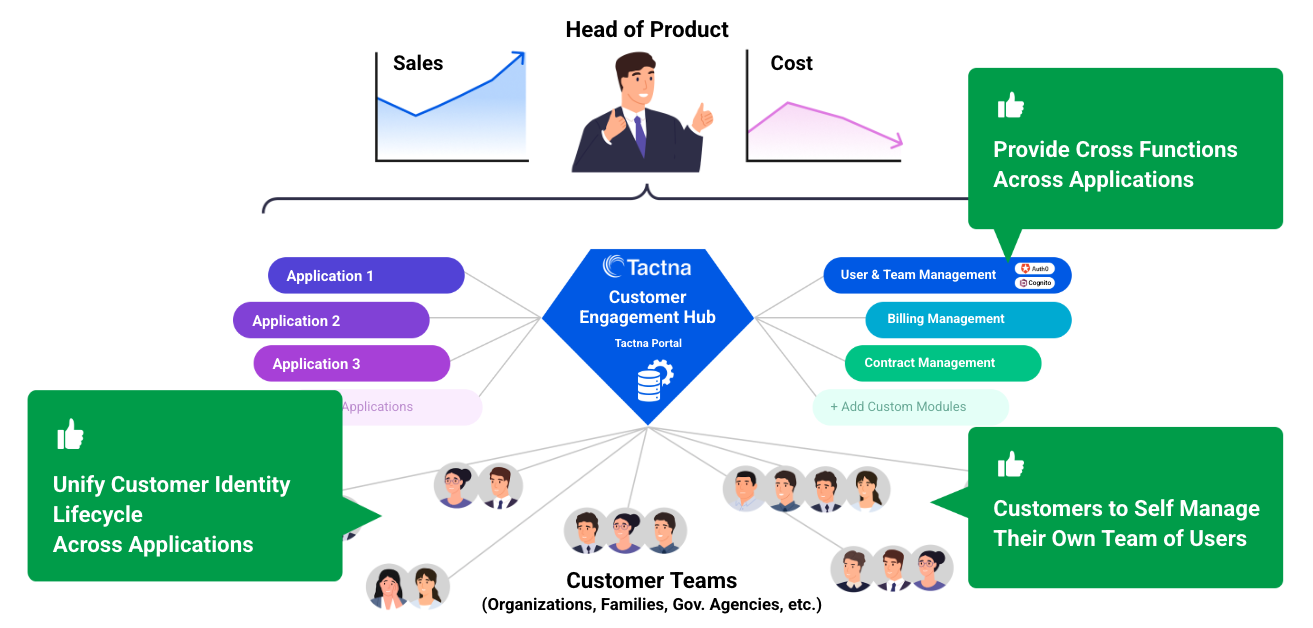B2B
As the number of applications expands, executing effective marketing and sales strategies becomes increasingly important. However, implementing authentication separately for each application makes data aggregation and utilization difficult while potentially hindering user experience. By establishing a unified identity management platform as a common authentication foundation with SSO capabilities, organizations can enable data-driven strategy execution to maximize business potential while improving customer experience.

1. Industry-Standard Authentication and Authorization with Organizational Context
By utilizing the following cross-cutting features essential for B2B applications, development teams can implement best practices with minimal rework:
- Organizational hierarchy treating companies, departments, and other entities as discrete units
- Centralized authorization management framework across multiple applications
2. Standard Portals for End Users and Operators
The authentication platform includes essential portal functionality, enabling rapid deployment and streamlined onboarding:
- Admin Portal
- System Administrator Portal
The Admin Portal enables self-service operations including application activation, profile management, and organizational member administration, significantly reducing operational overhead and support costs.
3. Extensibility for System Integration and Business Requirements
Through customizable screens and workflow capabilities, organizations can implement unique requirements including:
- Billing and subscription management
- Contract lifecycle management
- Integration with existing internal systems and workflows